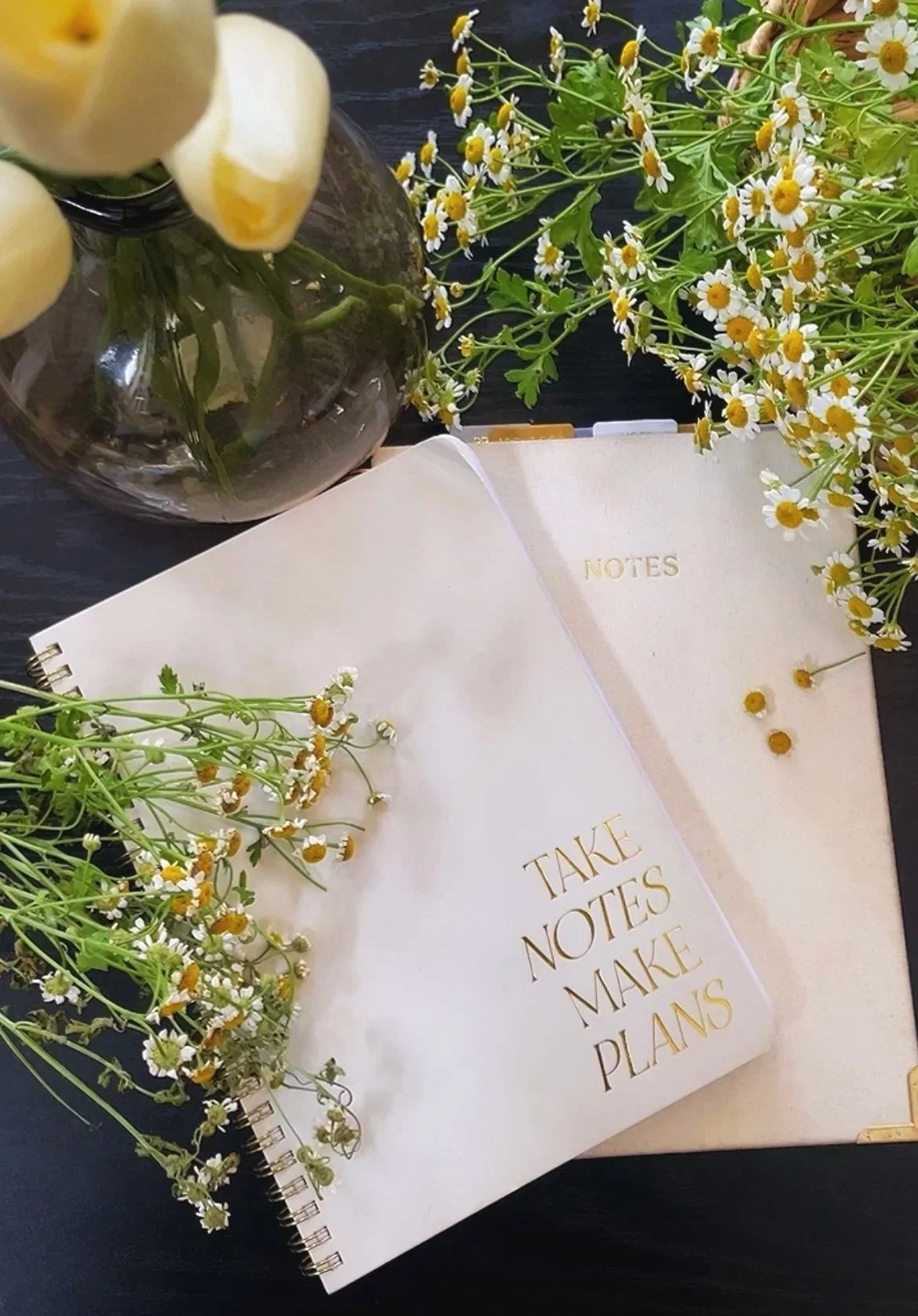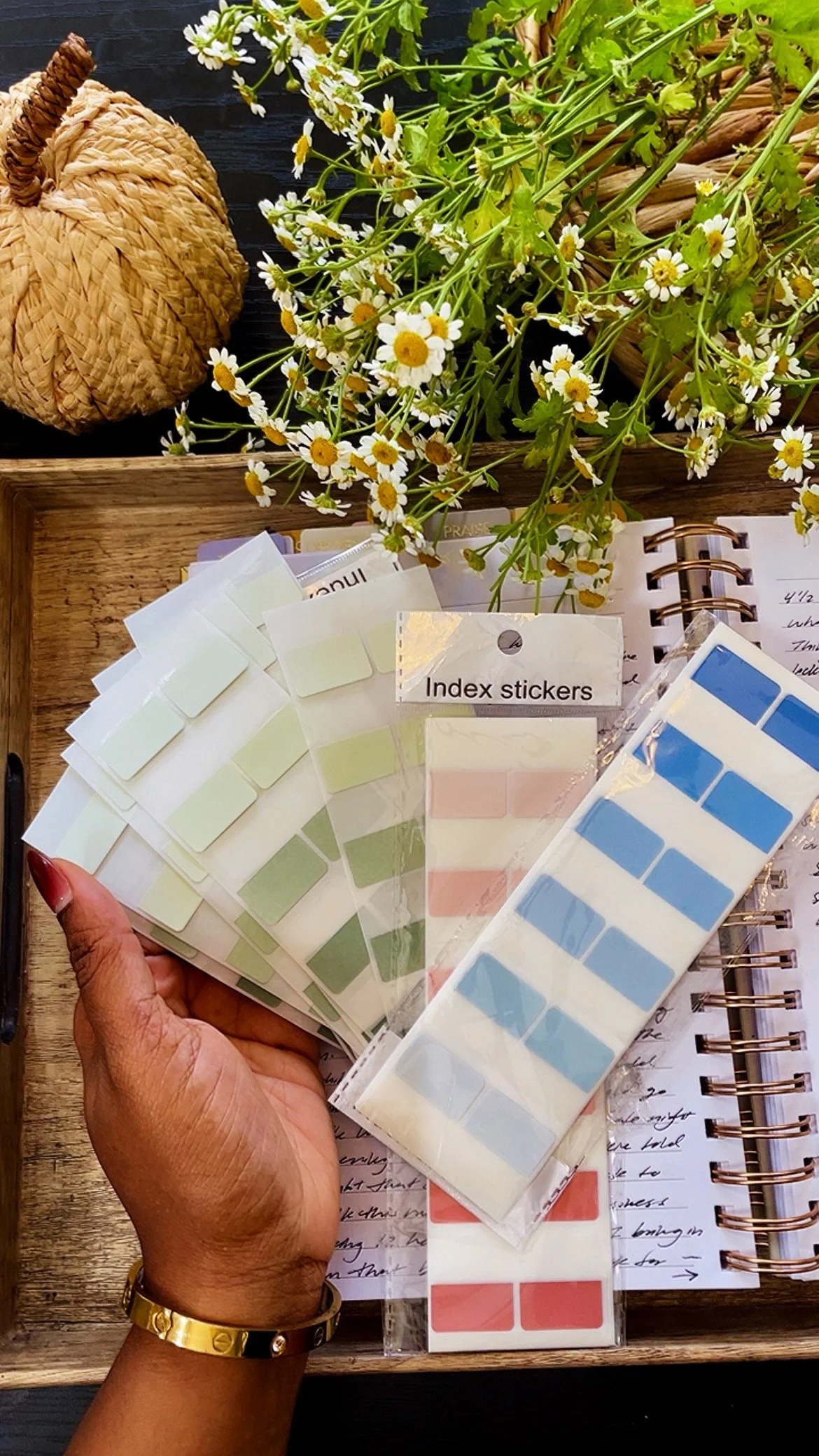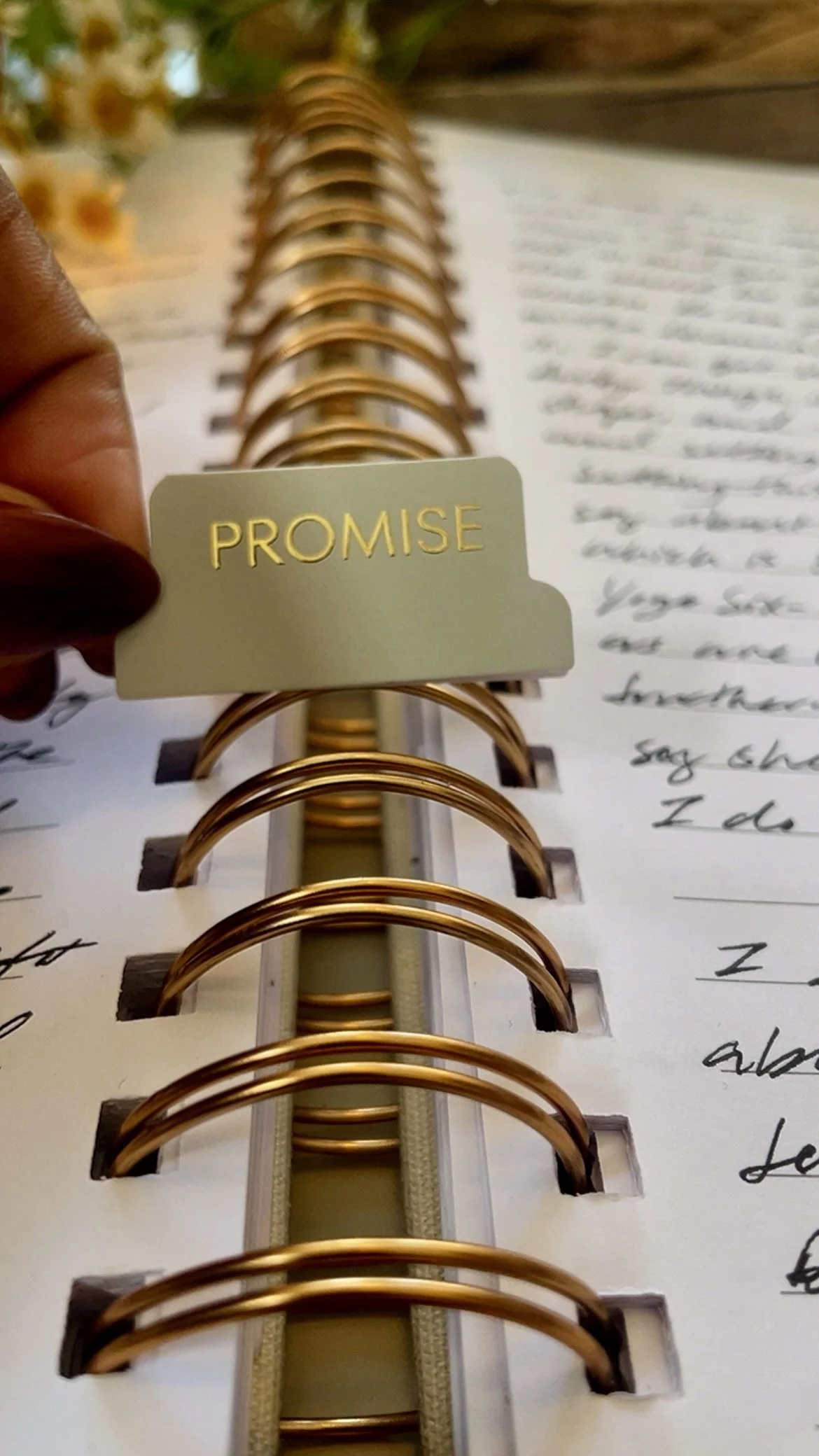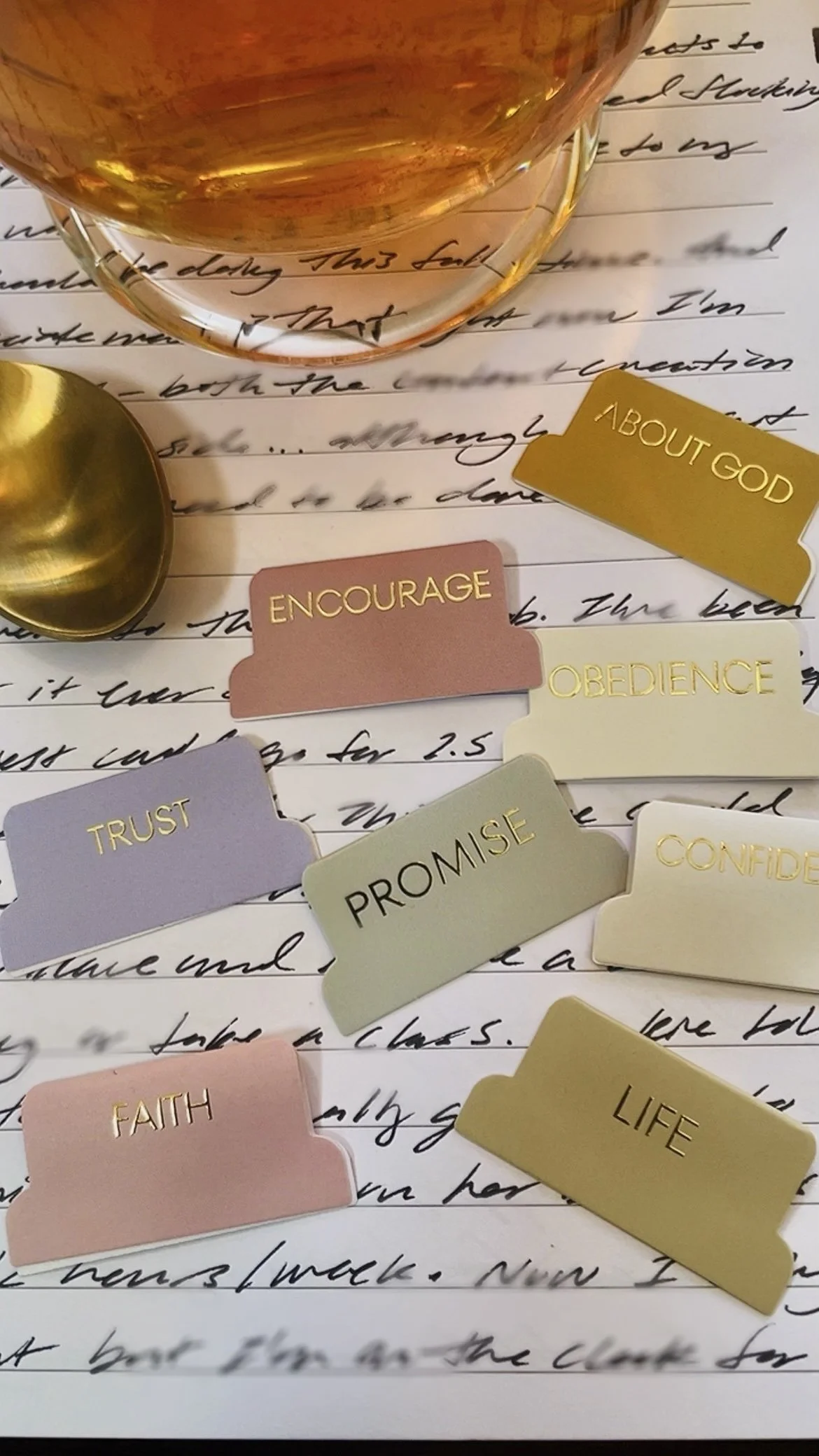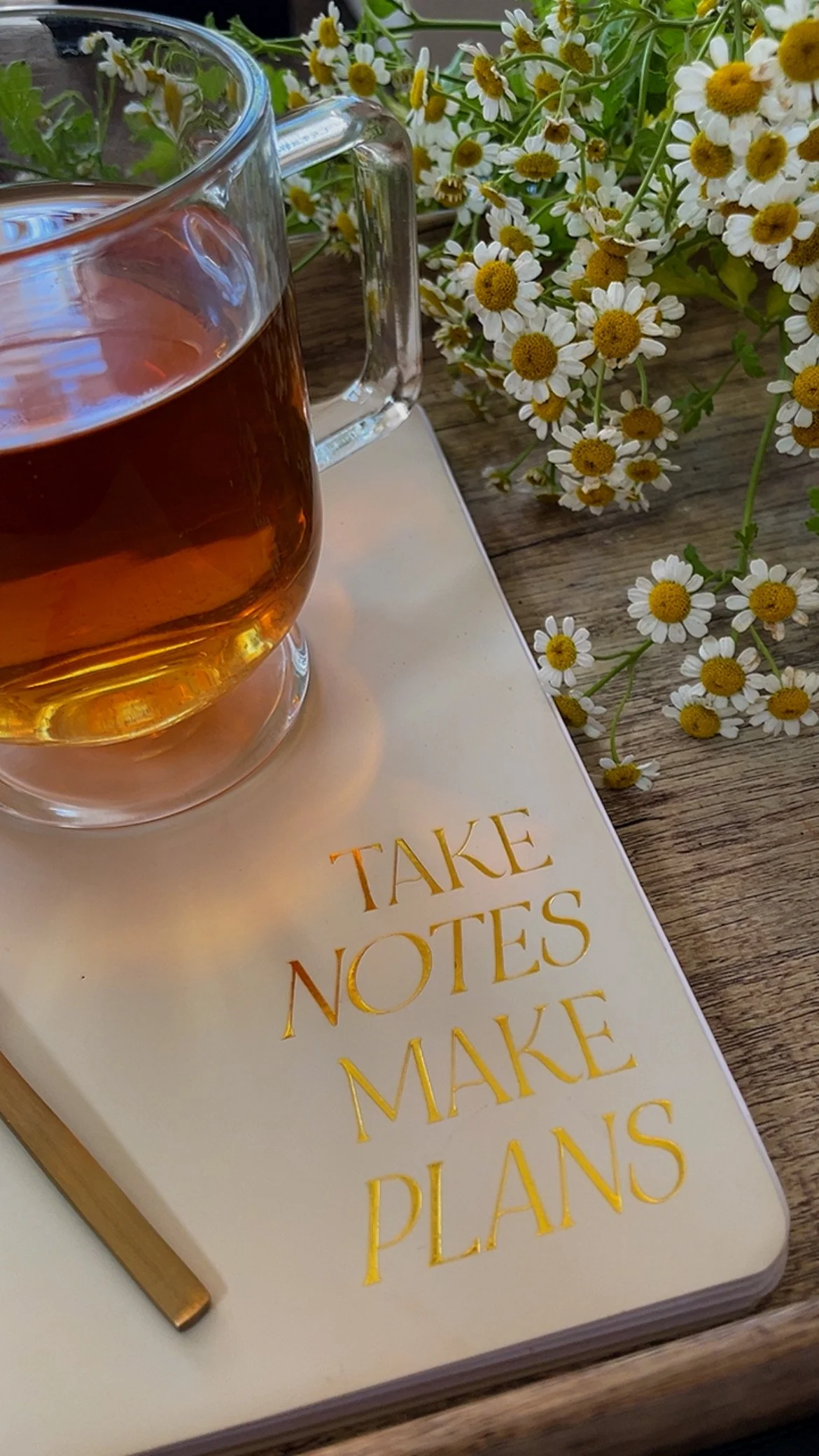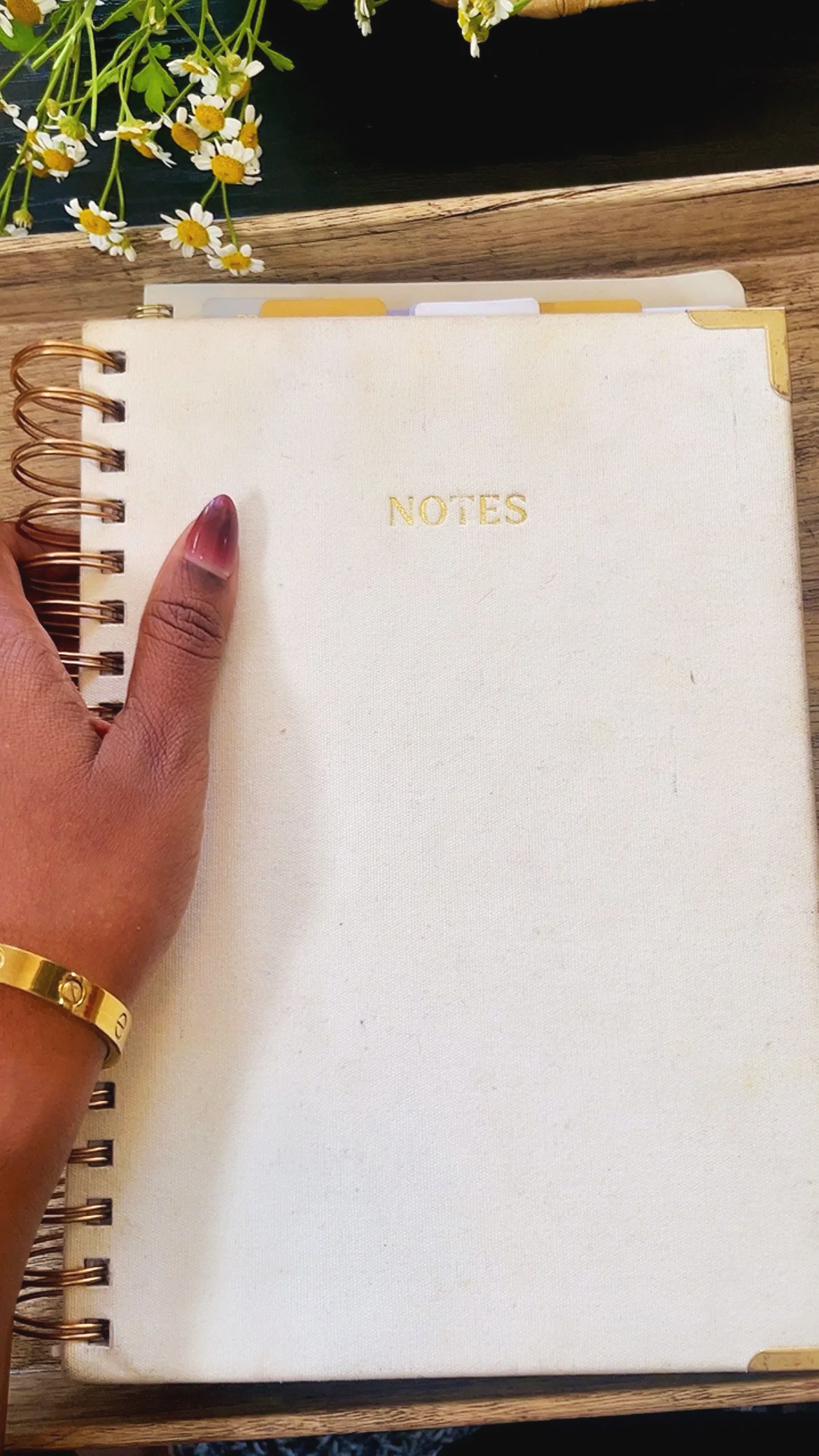How Journaling Helped Me See the Lessons I Keep Repeating
And why labeling pages can help you spot the patterns life is trying to teach you.
Reading time ~4 min.
* Note - This post contains affiliate links. I may earn a small commission if you shop through them. Read more about our disclaimers here.
I bought these from Amazon last July and I loveee the aesthetic! I use the $13 “Notes” notebook for journaling and I plan my days and keep to-do lists in the $8.00 “Take Notes, Make Plans” planner.
I’ve been journaling since I was around seven years old.
It started as a safe space to speak freely—to dump whatever came to mind. Some entries were light and full of gratitude. Others were heavier, raw, and honest, like prayers written just for me and God.
Then one day, I hit a wall. Life felt messy—relationships were shifting, things weren’t making sense, and I needed some kind of proof that there was a reason behind the chaos, and that I’d come out better on the other side.
That’s when it hit me: go back through your old journals.
At first, I was just curious.
But as I reread my words, it felt like déjà vu. Here I was, facing some of the same emotions and lessons years later.
The details had changed, but the patterns were the same.
And every single time, when I flipped a few pages ahead, I’d find a pattern that followed the chaos: gratitude, clarity, and answered prayers.
This was huge because it made me realize that nothing was random, and if I just identified and followed the pattern, I could create a blueprint for thriving, even in chaos.
After nearly three decades of journaling, I knew I needed a better way to trace those patterns—something to help me quickly find what I’d already lived and learned.
That discovery changed not only how I journal, but how I move through life.
THE REAL REASON TO JOURNAL
Journaling isn’t just about reflection. It’s regulation.
It’s the place where you get to be fully honest—without filtering your thoughts for anyone else.
Even if you don’t know what to say, write something. Describe the weather. Give thanks for small things. Note what feels off that day.
Documenting your life isn’t just for nostalgia; it’s so that when you start building something bigger than you’ve ever seen, you have a record of who you were and how far you’ve come.
Because here’s what I’ve learned: when I’m unproductive and playing it safe, life stays quiet.
But the moment I start chasing the vision—really going for it—things start popping up like whack-a-mole. Relationships shift, distractions multiply, and if I don’t lock in fast, I can lose myself in the noise.
Have you ever felt that way?
That’s where journaling saves me.
It’s better than running to the phone or venting online, because it keeps my focus where it belongs—on the lesson, not the chaos.
Your problems stay with you on paper (unless professional help is needed, which I absolutely recommend when it is). But what’s incredible is that your clarity stays with you, too.
When you come to your journal with truth and intention, it becomes more than a habit. It becomes a mirror that shows you what’s recurring, what’s shifting, and what’s ready to be healed.
HOW TO TURN YOUR JOURNAL INTO A GUIDE
I use these tabs to write-in headings that don’t come on the below tabs. Super easy! Check them out here.
Once you’ve started writing with honesty and consistency, the next step is learning how to use your journal as a guide, not just a release.
Here’s what changed everything for me: I began labeling my entries.
I noticed that certain themes kept surfacing. Things like —fear, relationships, trust, faith, and hope.
Instead of letting them get lost in pages of ink, I started marking them with sticky tabs. Each tab became its own chapter, showing me where I was growing and what lessons kept resurfacing.
You can do this too.
If it helps, start by choosing three to five themes that are most relevant to your life right now—maybe courage, patience, balance, or forgiveness.
When you write an entry that touches on one of those themes, mark it with a tab or color code it. Over time, those little flags will tell a story of their own.
These tabs are stunning and the packet comes with 24 different topics like: courage, faith, wisdom, fear, confidence, etc. Serious journalers, you need these!! Take a closer look here to see if the recurring themes in your journal are included.
The beauty of this system is that it lets you trace your progress without rereading every entry.
When something challenging happens, you can flip straight to the section that speaks to that season. It’s like getting advice from a wiser version of yourself—because that’s exactly what it is.
The more you do it, the more you’ll notice your own patterns of strength.
You’ll start to see how often you’ve been guided, how your mindset has shifted, and how even the things that once broke you have started to build you.
RECOGNIZING THE PATTERNS
Once you’ve labeled a few pages, the real magic starts when you go back and read them!
This is where you begin to see your own growth in motion.
Maybe you’ll notice how your words shift from frustration to gratitude. Maybe you’ll see that you’ve written the same dream over and over again, and it’s finally taking shape. Or maybe you’ll catch the exact lesson life’s been trying to teach you all along.
The first time I did this, it was eye-opening.
I realized how often I’d been faced with the same feelings—fear, uncertainty, waiting—and how every single time, the story ended the same way: with clarity, peace, and a quiet knowing that I was never really stuck.
When you start noticing those patterns, everything changes.
You stop panicking when things feel hard because you’ve seen this part of the story before—and you know how it ends. You start trusting that the detours are part of the map.
It’s not about having every answer written out neatly on paper; it’s about having reminders that you’ve already lived through what felt impossible once.
So the next time you feel lost, flip back.
Let your own words remind you who you were, what you learned, and that you’ve never actually been off track—you’ve just been circling back for clarity.
WHAT TO DO WHEN YOU NOTICE A PATTERN
Seeing the pattern is only the first step. What you do after that determines how much you grow from it.
When I notice a recurring lesson in my journal, I treat it like an invitation. It’s not there to shame me; it’s there to show me where I still have room to evolve.
So instead of spiraling or ignoring it, I flood myself with perspective.
I’ll look for anything that can help me understand it better—books, podcasts, sermons, interviews, scriptures, even random conversations that speak to what I’m experiencing.
I become a student of that pattern until something clicks.
And that’s the beauty of this kind of journaling: it doesn’t just make you aware; it makes you curious.
You start connecting dots faster, recognizing triggers sooner, and making decisions that align with who you want to become—even when those decisions feel heavy.
When you document your growth this way, you eventually become what I call a “gentle expert” in your own life. You’ll start to know a little bit about everything because you’ve explored so many lessons.
You’ll also begin to trust your own wisdom because you’ve studied yourself long enough to see the truth.
(If this part speaks to you, I wrote more about it in How to Love Yourself Again — a reflection on getting to know yourself by digging into your past.)
But here’s the thing: once you spot a pattern, you only have two choices—face it or repeat it.
Both paths teach you something, but only one moves you closer to peace.
THE LESSON BENEATH THE LESSON
Over time, I’ve learned that life rarely gives us brand-new lessons—it just keeps circling back to the ones we still need to master.
Journaling has shown me that growth isn’t always about doing more; sometimes it’s about noticing sooner. It’s about recognizing the patterns, facing them with honesty, and choosing differently the next time they appear.
When I look back through my old pages, I see proof of that.
I see prayers that became answers, lessons that turned into wisdom, and seasons that once felt unbearable but now read like transformation.
But I’m still learning.
There are patterns I’m just beginning to understand—things that still feel hard to shake, even after all these years of writing. And that’s okay.
Journaling is how I survive the messy middle. It’s where I give myself grace and talk to myself like a friend until I can find my footing again.
That’s the power of documenting your life—you realize you’ve always had evidence that you were growing, even when you couldn’t see it in the moment.
So the next time you feel like you’re starting over, remind yourself:
You’re not starting from scratch.
You’re starting from experience.
With Love,
Ambyr

